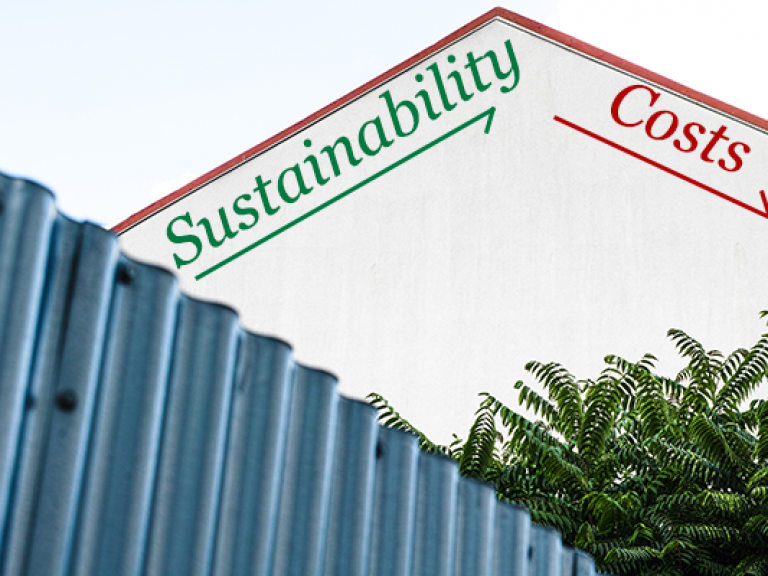Firstly, what is negative gearing and how is it used in property investment?
In answering that, I would be lax not to briefly mention its' polar opposite sister too, positive gearing. I won't go into too much detail comparing the two: they're both good, just different (you do the research to find out which may be the better investment strategy for your circumstances).
Positive Gearing
So, positive gearing is a cash-flow property investment strategy. It earns you income and not equity.
- The income earned can be used to supplement your own, pay down the mortgage quicker and purchase additional property.
- This income attracts tax at the top end of your personal income tax bracket.
- It may be a good strategy for retirees and single people earning a moderate income.
Negative Gearing
While negative gearing is a capital growth property investment strategy. It earns you equity and not income.
- That equity can be leveraged to build a property portfolio where you own the overall equity growth value of that portfolio, but not the properties themselves initially. (You may choose to start making principal mortgage payments after 5 years, or to sell a few properties after 10 years to pay off the rest).
- The 'loss' with this strategy is deducted from your personal income before you pay tax.
- It may be a good strategy for moderate-income couples and high-income individuals.
- To create positive income when you retire with this strategy, you may choose to pay off the mortgages on your properties, as mentioned above, or to subdivide/redevelop your properties.
Sometimes a combination of the two gearing strategies can be used to balance your portfolio and curb income sacrifice.
Us? We choose negative gearing every time! It makes up Step 3 of our 7 Steps to Wealth property investment strategy: Maximise Your Tax Returns (download our free eBook to learn more)!
So What does Labor's Proposed Negative Gearing Abolishment Mean for Property Investors?
To recap, negative gearing is an investment strategy whereby tax deductions are used to minimise the shortfall between an investment property's income (rent) and expenses (loan interest, insurance, fees, rates, maintenance and depreciation).
Looked at another way, negative gearing can be used to lower your tax bracket and take-home pay so you retain more of your earnings (in property).
As your investment property 'loss' can currently be claimed before tax, the loss is effectively being discounted by more than a third for most people to almost half for high-income earners (the 32.5 - 45% tax you would've paid at the top end of your personal income tax bracket).
For eg. Say you earn $190,000 a year (go you!), you'll pay 45% tax on that top $10,000. The government will take $4,500, leaving you with $5,500 of that $10,000. With a 9.5% super contribution, your annual take home pay would be around $127,000.
But if you made a loss on your total property portfolio of $10,000 that year, you could deduct it from your pre-tax salary. Your taxable salary would then be $180,000 and only taxed at 37% at the top end. With a 9.5% super contribution, your take home pay would be around $122,000.
So even though you make an investment book loss of $10,000, you only make a personal income loss of $5,000 (a salary loss of about $100/w).
If negative gearing were to be abolished, you would have to carry the full loss financially as no tax discount will apply.
So, Why are We Not in Panic Mode?
I'm glad you asked! Well, for 2 reasons!
Labor unveiled its policy not to completely abolish negative gearing, but merely to limit negative gearing to newly built properties from July 2017 onwards.
1. So new properties are not affected and investing in depreciating new properties is what we do!
2. And it isn't retrospective, so any existing negatively geared properties would not be affected by the change.
So we're sweet!

What About Proposed Changes to Capital Gains Tax Discounts?
As far as lowering Capital Gains Tax discounts from 50% down to 25% (which works out to an increase in Capital Gains Tax of approximately 9%), we're not pleased but also not too worried. Why?
1. Our investment strategy is a long-term one and we advise holding onto your properties for as long as possible to maximise compound growth and limit sales costs.
2. Again, the changes aren't retrospective, so they don't apply to existing property investments. If you are considering buying investment property, we recommend you do so within the next year to save 9% Capital Gains Tax down the line (if Labor is voted in)!
If you ever do decide to sell an investment property purchased post-July 2017, you'll be looking at Capital Gains Tax on your profit of between 25 - 34%, depending on your salary!

We Have 3 Suggestions in this Instance:
1. You may be far better served holding onto that property, paying off the mortgage and living on the rental income instead!
2. If you're a high-income earner and can afford to do so, you could choose to negatively gear new properties to lower your personal income tax bracket. Then, should you choose to sell later, you will only have to pay 32.5 - 37% Capital Gains Tax, instead of at 45%!
3. If you're a dual-income household, you could opt to purchase the investment property in the name of the person with the lower salary. That way, you'll end up paying Capital Gains Tax at the lower personal income tax amount of the two of you.
And What About the Knock-on Effects These Changes Will Have on the Market?
Predictions have been made, but we won't really know until it happens!
If anything, history teaches us this:
In July 1985, the federal Labour government disallowed the tax benefits of negative gearing. All losses that were generated had to be rolled up into the cost of the property and deducted at the time the property was sold, from the Capital Gains Tax.
It wasn't retrospective causing investors to cling tightly to their existing, negatively geared, grandfather properties. The policy did cause a major stall in investment in the new residential property market. Suddenly, there was a drastic shortage in the supply of residential housing for a growing rental population and an economy-dragging downturn in building activity.
The treasurer was forced to reintroduce negative gearing in September 1987.
Best case scenario: it seems restricting negative gearing to newly built properties may avoid past knock-on effects on housing supply and economic activity.
If you want to save 9% CGT and are ready to invest, book a free phone appointment with one of our consultants now.
Disclaimer









